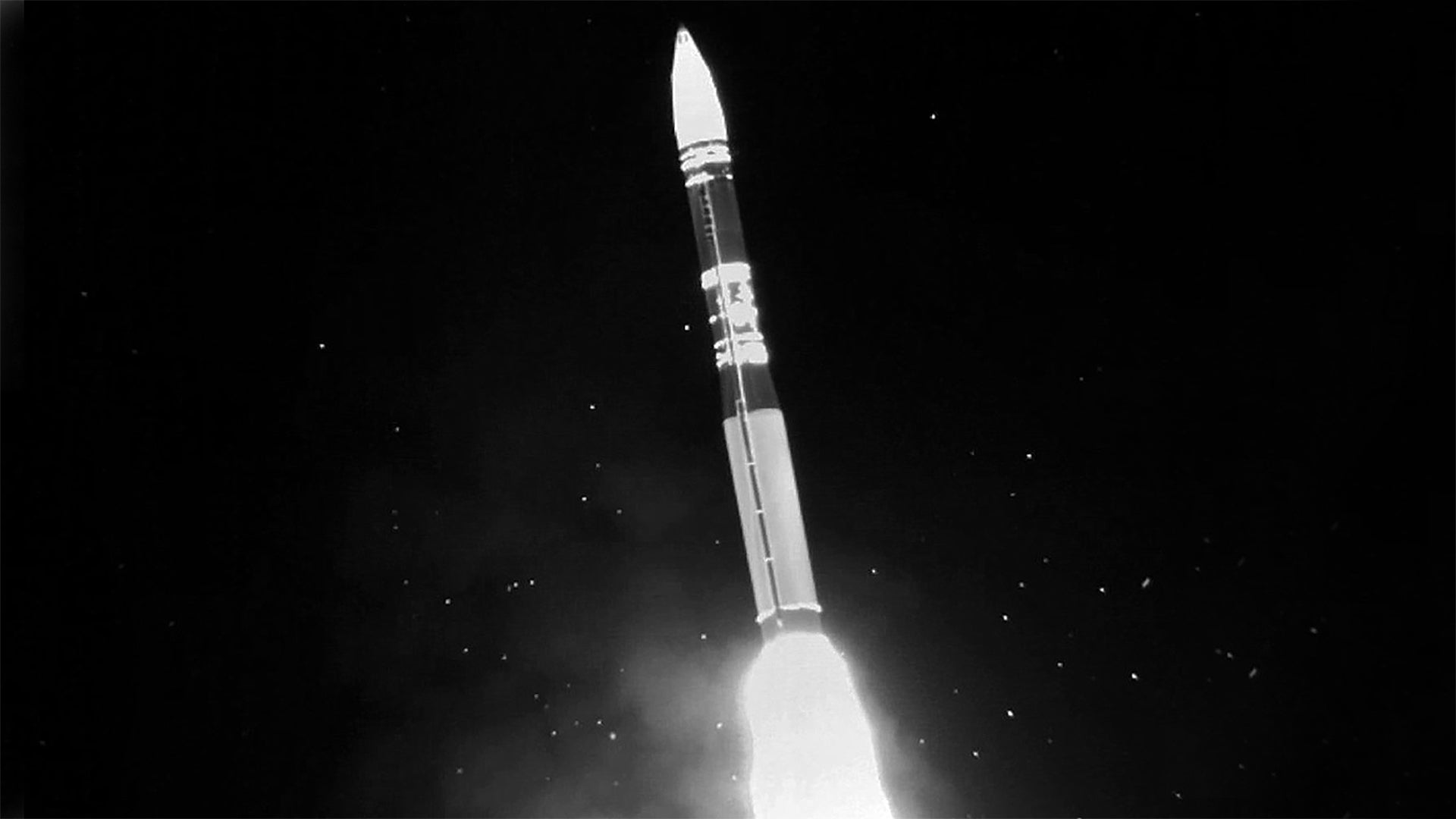The U.S. Air Force has released rare shots of an LGM-30G Minuteman III intercontinental ballistic missile shortly after launch during a recent test launch from Vandenberg Air Force Base. This comes as the Air Force is celebrating the 50th anniversary of these missiles entering service this year and just a day after formally awarding Northrop Grumman a contract to continue development and eventually build the Minuteman III’s replacement, known as the Ground-Based Strategic Deterrent.
Air Force Global Strike Command (AFGSC), which oversees America’s intercontinental ballistic missile (ICBM) force, which is presently made up entirely of Minuteman IIIs, released the pictures on its Facebook page on Sept. 9, 2020. A camera team at Vandenberg captured the infrared images during a scheduled test launch of an LGM-30G from that base on Sept. 2.
“We just had to share these amazing shots of our #MMIII operational test launch on Sept. 2 taken by the optics camera team at Vandenberg Air Force Base!” AFGSC’s brief Facebook post read. “It’s not often you see shots like these!”


“Not often” is something of an understatement. Official images of this quality showing one of these missiles in flight are very rare. Typically, after Minuteman III tests, the Air Force only releases pictures and video of the missile leaving the silo and streaking across the sky. Since these launches are almost exclusively conducted at night, the imagery generally does not provide much in the way of detail.
However, the Air Force had already released video footage of the Sept. 2 test showing more of the initial flight than usual. It’s not immediately clear why there has been this apparent push to provide more visuals surrounding this particular launch.

The Sept. 2 test involved the launch of a missile with a single reentry vehicle. The reentry vehicle came down approximately 4,200 miles away from Vandenberg at Kwajalein Atoll in the Marshall Islands in the Pacific. “These test launches verify the accuracy and reliability of the ICBM weapon system, providing valuable data to ensure a continued safe, secure and effective nuclear deterrent,” the Air Force said of this particular launch.
This followed a more uncommon test launch in August involving a Minuteman III in a Multiple Independent Reentry Vehicle (MIRV) configuration with three reentry vehicles, as it was originally designed to carry. All operational LGM-30Gs are presently equipped with a single reentry vehicle only as a result of various arms control agreements, which you can read more about in this past War Zone piece.
2020 does mark 50 years in service for the LGM-30G, the first examples of which were operationally deployed in 1970. The annivarsary has put an additional focus on these missiles. The Minuteman III was the first MIRVed ICBM to enter service anywhere in the world.

In addition, on Sept. 8, 2020, the Air Force declared Northrop Grumman to be the formal winner of the Ground-Based Strategic Deterrent (GBSD) competition, awarding it a deal worth more than $13 billion. This company had been the only remaining contestant after Boeing dropped out of the running last year.
Boeing’s decision, along with the factors that led up to it, had prompted criticism, including from members of Congress who warned that having just one bidder could lead to increased costs. The total cost of replacing the Minuteman IIIs with new GBSD missiles, which have been tentatively designated YLGM-182As, is estimated to be around $100 billion, including various ancillary spending, such as infrastructure improvements.

This is just one part of a broader and potentially budget-busting nuclear modernization push across the U.S. military, which you can read about in more detail in this previous War Zone piece. The ICBM leg of America’s nuclear deterrent triad, also known as the “nuclear sponge” since it is meant to “soak up” incoming nuclear strikes, forcing an opponent to commit multiple warheads to each silo and hardened command bunker, is already, at best, a controversial part of the U.S. defense budget, as The War Zone
All of this also comes as the U.S. government continues to negotiate with its Russian counterparts about the future of the New Strategic Arms Reduction Treaty (New START), which is set to expire next year if the two sides can’t agree on terms to extend it. The United States is looking to bring China, which is expanding its nuclear and ballistic missile capabilities, into any future agreement, as well.

The end of New START would open the door for dramatic changes in America’s nuclear arsenal, broadly. For the ICBM force, this might lead to re-MIRVing of the Minuteman IIIs or a change to the planned configuration of the GBSD. The latter missiles are slated to begin replacing the existing LGM-30Gs starting in 2029.
Whatever the case, the Air Force has clearly been particularly keen recently to highlight the existing Minuteman IIIs, including with rarely seen imagery of the missile in flight.
Contact the author: Joe@thedrive.com
